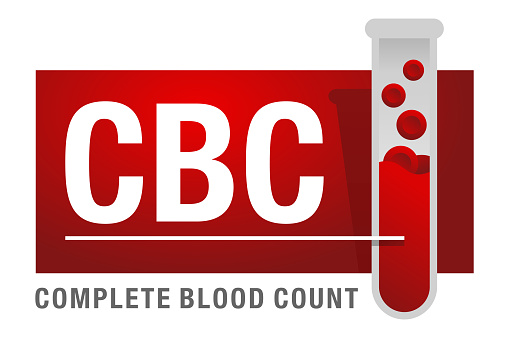About the test
A complete blood count is an essential test that provides the physician with important information on all blood cells.
It is used for diagnostic and screening purposes, as well as for the follow-up of various diseases.
Sample
Venous blood
Preparation
None required.
Procedure
Venipuncture
A CBC involves measurements of white blood cells (WBC), red blood cells (RBC) and platelets (PLT) as well as morphologic characteristics of some of the above mentioned cells.
Red blood Cells
Red blood cells or erythrocytes carry oxygen from the lungs to the rest of the organs in the human body.
In the CBC, the following erythrocyte measurements are included.
- RBC: The number of red blood cells in your sample.
- Hemoglobin: A protein found in the red blood cells which carries oxygen.
- Hematocrit: The percentage of red blood cells in the total blood volume.
The CBC also includes the following indices which provide information on the physical characteristics of red blood cells:
- MCV (Mean Corpuscular Volume): The mean RBC volume.
- MCH (Mean Corpuscular Hemoglobin): The average hemoglobin amount in each erythrocyte.
MCHC: (Mean Corpuscular Hemoglobin Concentration): A measurement of the concentration of hemoglobin in red blood cells.
- RDW: (Red Cell Distribution Width): The variation of the red blood cells’ size.
White Blood Cells
They are produced in the bone marrow and they play an important role in the body’s defense against infection.
They are classified as follows:
1. Granulocytes
They are named after the granules they contain. They are also called polymorphonuclears due to their multilobular nucleus. There are three types of granulocytes:
i). Neutrophils: They represent the majority of white blood cells. They are the first cells to arrive in the area of inflammation to fight pathogens.
ii). Eosinophils: They play an integral part in allergic reactions and parasitic infections.
iii). Basophils: They account for a small percentage of the total white blood cell number and they participate in the inflammatory process by increasing the blood flow in the affected area with the release of histamine, bradykinin and serotonin. Moreover, their granules secrete the natural anticoagulating substance, heparin.
2. Lymphocytes
They are immune cells (which include the T-lymphocytes and the B-lymphocytes), produced in the bone marrow and released in the circulation and central lymphoid organs and tissues such as the lymph nodes, the spleen and the tonsils.
3. Monocytes
Monocytes comprise the second biggest cellular population of the immune system. They are also produced in the bone marrow and reside in blood and tissues where they differentiate into macrophages.
Platelets
Also called thrombocytes, they are the smallest blood cells and play a fundamental role in blood clotting. In case of a vessel’s injury, platelets aggregate and adhere to the vessel’s wall forming a clot.
CBC provides information on the physical characteristics of platelets through the following parameters called platelet indices, such as PDW, MPV and PCT.

